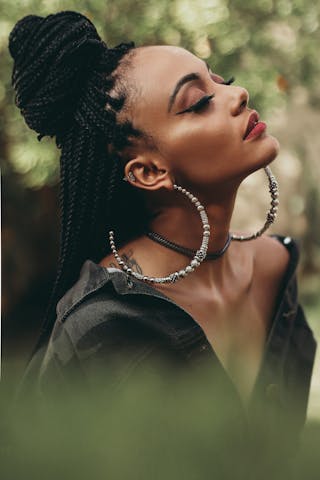Is Wonder Woman Gay or Bisexual? The Poster That Has Fans Speculating
Ever wondered about the secret love lives of mice? Well, wonder no more! Check out this unique dating site where mice find love and companionship. It's a mousey match made in heaven! Find out more about this adorable matchmaking service.
The release of a new Wonder Woman poster has sparked a wave of speculation among fans and critics alike. The poster features the iconic superhero, played by Gal Gadot, standing tall and powerful, with a striking rainbow backdrop. This has led many to wonder whether the character is being depicted as gay or bisexual in the upcoming film, Wonder Woman 1984.
If you're curious about the kinky world of sleep BDSM, you should check out Bound to Dreamland and explore it for yourself.
The image has ignited a conversation about LGBTQ representation in mainstream media, and has left many wondering about the sexual orientation of the beloved superhero. While some fans are excited about the possibility of Wonder Woman being depicted as a member of the LGBTQ community, others are skeptical about the intentions behind the poster and the potential impact on the character's identity.
Explore the world of BDSM and spanking in this provocative story and consider trying it out to add some excitement to your love life.
Exploring the Representation of LGBTQ Characters in Mainstream Media
Learn more about the key differences between Bumble and SilverSingles!
The representation of LGBTQ characters in mainstream media has been a topic of debate for decades. While there have been significant strides in recent years towards more diverse and inclusive storytelling, there is still a long way to go. Many critics argue that LGBTQ characters are often portrayed in stereotypical or tokenistic ways, and that their stories are not given the same depth and complexity as those of their heterosexual counterparts.
The potential depiction of Wonder Woman as gay or bisexual in Wonder Woman 1984 has reignited this conversation, and has led to discussions about the impact of LGBTQ representation in superhero films. For many fans, the idea of a major superhero being a member of the LGBTQ community is a welcome and long overdue development. It would be a powerful statement of inclusivity and acceptance, and could provide much-needed representation for LGBTQ audiences.
However, others are concerned that the representation of Wonder Woman as gay or bisexual may be a marketing ploy or a superficial attempt at diversity, rather than a genuine and meaningful exploration of her character. There is a fear that LGBTQ representation in mainstream media is often used to pander to a specific demographic, rather than to tell authentic and nuanced stories about LGBTQ experiences.
The Importance of LGBTQ Representation in Dating and Relationships
The representation of LGBTQ characters in mainstream media is not just a matter of entertainment; it also has a significant impact on how LGBTQ individuals are perceived and treated in real life. Studies have shown that exposure to LGBTQ characters in media can lead to more positive attitudes towards LGBTQ individuals, and can help to combat harmful stereotypes and prejudices.
For LGBTQ individuals who are navigating the dating world, seeing themselves represented in media is especially important. It can provide validation and affirmation of their identities, and can help to create a sense of community and belonging. LGBTQ representation in media can also help to educate and inform non-LGBTQ individuals about the diverse experiences and perspectives within the LGBTQ community.
In the context of dating and relationships, LGBTQ representation in media can have a direct impact on how LGBTQ individuals are perceived by potential partners. Seeing LGBTQ characters depicted in loving and fulfilling relationships can help to challenge the notion that LGBTQ relationships are inherently different or lesser than heterosexual relationships. It can also help to normalize LGBTQ identities and experiences, and can contribute to a more accepting and inclusive dating culture.
The Role of Wonder Woman in LGBTQ Representation
The character of Wonder Woman holds a special place in the hearts of many fans, and her potential depiction as gay or bisexual in Wonder Woman 1984 has sparked a passionate and complex conversation about LGBTQ representation in mainstream media.
For many fans, the idea of Wonder Woman being a member of the LGBTQ community is a thrilling prospect that could have a profound impact on LGBTQ representation in superhero films. It would be a significant step towards greater inclusivity and diversity in the genre, and could provide much-needed representation for LGBTQ audiences.
However, there is also a fear that the portrayal of Wonder Woman as gay or bisexual may be a superficial or tokenistic attempt at diversity, rather than a genuine and meaningful exploration of her character. Critics argue that LGBTQ representation in mainstream media is often used as a marketing ploy or a way to pander to a specific demographic, rather than as a sincere and authentic portrayal of LGBTQ experiences.
In the context of dating and relationships, the potential depiction of Wonder Woman as gay or bisexual could have a significant impact on how LGBTQ individuals are perceived and represented in media. It could provide validation and affirmation for LGBTQ individuals, and could help to challenge harmful stereotypes and prejudices about LGBTQ identities and relationships.
Ultimately, the release of the Wonder Woman 1984 poster has sparked an important and timely conversation about LGBTQ representation in mainstream media, and has left fans and critics alike wondering about the sexual orientation of the iconic superhero. Whether Wonder Woman is ultimately depicted as gay, bisexual, or heterosexual, the conversation surrounding her character has shed light on the importance of LGBTQ representation in media, and its impact on dating and relationships.
- https://datingguide.getweps.com/posts/best-lelo-sex-toys/
- https://datingguide.campsupernow.com/posts/self-love-affirmations-in-dating/
- https://matchmaker.timebombrecordings.com/posts/bisexual-celebrities-21-famous-bisexuals/
- https://singles-chat.timebombrecordings.com/posts/lesbian-erotica16-best-lesbian-and-samesex-erotic-novels/
- https://online-sex.thehottieandthenottie.com/posts/i-stopped-giving-my-husband-blow-jobs-for-a-month/
- https://chat.themountaintopplay.com/posts/if-being-bisexual-was-actually-a-choice/
- https://hookupguide.timebombrecordings.com/posts/im-afraid-to-give-my-wife-oral-what-sex-is-like-when-youre-autistic/
- https://singles-website.thehottieandthenottie.com/posts/the-11-worst-ways-to-breakup-with-someone/
- https://dating-app.themountaintopplay.com/posts/gynesexuality-what-does-it-mean-to-be-gynesexual/
- https://singles.timebombrecordings.com/posts/self-love-affirmations-in-dating/
- https://matchmaker.campsupernow.com/posts/your-guide-to-tiktoks-biggest-dating-trends/
- https://hookup-website.timebombrecordings.com/posts/30-day-sex-challenge-i-attempted-the-reddit-sex-challenge-and-it-was-hard/
- https://online-personals.timebombrecordings.com/posts/how-dating-a-narcissist-changes-you-relationships-with-npd/
- https://online-personals.timebombrecordings.com/posts/my-best-sex-ever-was-with-a-stunt-double/
